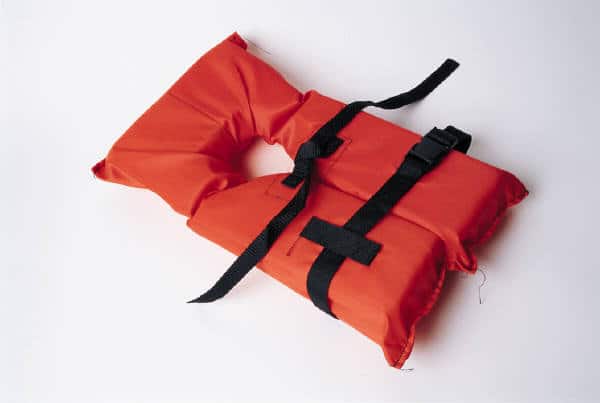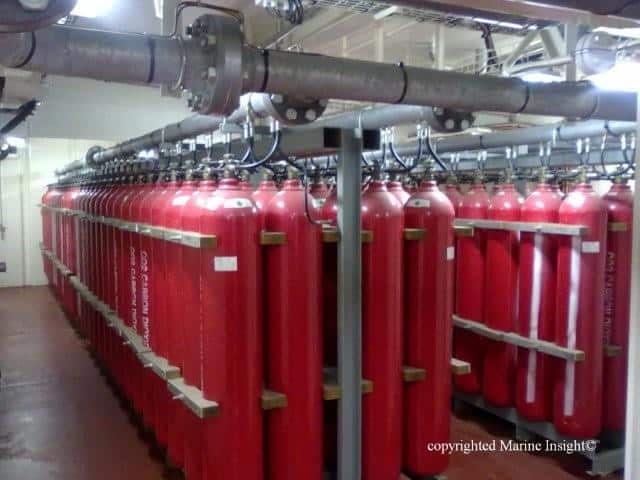Adhering to the Planned Maintenance Schedule pretty much guarantees that the general culture of safety is upheld. And although safety is an aspect regularly taken care of, it might be necessary to overhaul and renew equipment before the scheduled survey.
Replacing expired edibles (in the liferaft), pyrotechnics, damaged labels/stickers etc. all require immediate attention. Certificates are also examined and so are the logbooks; so that should be kept in mind as well.
Generally speaking, the extent of stringency depends on the visual assessment of the ship, hence it is important to keep every safety aspect, both visually and otherwise.
So what are some of the salient points to carry out before the survey? Read on:
1. Check Lifeboat: The lifeboat and its equipment (including edibles, pyrotechnics, non-pyrotechnics) should be checked and renewed. The ship’s crew must be strictly instructed on the operation of the lifeboat and purpose of every installation in the lifeboat. Repaint the written information on the lifeboat. Lower the lifeboat and check its movement both ahead and astern. Necessary overhauling and renewal must be done as per requirement.
2. Check Davits: Davits of lifeboats should be de-rusted, repainted, greased along with the winches and the blocks. Check and then recheck so that they don’t jam at the crucial moment.
3. Check Inflatable Liferafts: The inflatable liferafts should be checked if they’ve been serviced at regular intervals. Check the equipment strictly and make any necessary replacements if required. Stickers generally require to be replaced as they lose their sheen over time easily under the duress of weather.
4. Check Handheld Radios, Smoke Signals and Lifebuoys: The survival craft’s portable handheld radio should be checked and kept in optimum working order. The ship’s crew should know all about the radio including battery backup, operation etc. (the GMDSS handbook would be the right place to search for exact specifications with regard to the handheld radio) The life buoys should be inspected and overhauled as required. Mark conspicuously the ones that are not to be used anymore. The lights and batteries should be replaced if they’ve expired. Check the smoke signals as well as the lifelines. As per the safety plan of the vessel, the lifebuoys should be aptly placed at different locations. Their location should be clearly marked out for clarity.
5. Check Lifejackets: Check All the lifejackets onboard should be rigorously checked. Expired lights and faulty lifejackets must be replaced. Also, the entire crew must be made to practice the wearing and removal of the lifejacket in a stipulated time. Sometimes an oversized/undersized jacket may be required in which case they should be ordered promptly. No surveyor will excuse lesser number of life jackets.
6. Check Pyrotechnics: Pyrotechnics must be functional and those that aren’t must be replaced. Check the LTA as well. The crew must know where the pyrotechnics are kept and how they are to be used. HiGenerally speaking, the instructions on the cover/front are enough to gather operational informations
7. Check Fire Control Plans and Systems: The fire control plans must be checked for legibility. Each of them must be checked and conformed to.
Fighting Equipment: Test the fire/smoke detection systems if possible. The fire pumps, fire hoses, fire extinguishers, nozzles, couplings should all be checked while at it. The information regarding the fire extinguishers must be promulgated to the ship’s crew so they know which on to use for a specific kind of fire (Class A, B, C, D). Overhaul and refill extinguishers (as well as any cartridges) as per the requirement. The fireman’s outfit should be inspected for functionality. Again, the ship’s crew should practice wearing and removal of the kit (during drills) in order that they know how to do so at the crucial times. All alarms must also be tested.
9. Check Pilot Ladder: The pilot ladders along with all ancillary equipment must also be checked. Ensure that they match up to the specifications laid down as per legalities.
10. Check Other Important Systems According to the Type Of the Ship: The above-mentioned points are general and apply to all ships. Tankers have additional checking points that are:
- The IG system.
- Piping of the fixed fire fighting system in the cargo pump room.
- The deck foam as well as sprinkler system.
Note: It is important to remember that the navigation systems and equipment are inspected as well, as part of the safety survey. Needless to say, all the navigation equipment must also be checked for operation and efficiency. This includes the emergency machinery as well.
We all go through ample safety drills onboard. A correct sense of the urgency of a proper safety system will only come when taking those drills seriously. Having a safety drill way too often reduces it’s impact on the ship’s personnel. Of course, a few ones before a survey will automatically prepare the cr Iew for the surveyors interrogation, so to speak.
No amount of attention to safety is enough, for it is one such aspect onboard that has to be at its highest level of possible perfection! Lives are at stake when at sea and any small ignorance might lead to a massive disaster. A well maintained safety system onboard would obviously call for much less work at the end moment.







No comments:
Post a Comment